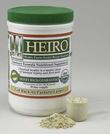Pronunciation
PURR-go-leyed - Pronunciation guide
Brand Names
- Heiro Pergolide Powder
- Permax
- Prascend Tablets
Description
 Pergolide, used to treat Parkinson's disease in humans, works by binding with drug receptors that control production of dopamine, which is a chemical neurotransmitter produced by the brain.
Pergolide, used to treat Parkinson's disease in humans, works by binding with drug receptors that control production of dopamine, which is a chemical neurotransmitter produced by the brain.
Horses that have clinical signs similar to Cushing's disease in humans have been successfully treated with pergolide since the early 1990's. The Cushing's-like symptoms are the result of an enlargement or hypertrophy of the horse's pituitary gland. Pergolide does not cure pituitary pars intermedia dysfunction, but rather helps manage the symptoms, enabling the horse to lead a near-normal life.
As of early 2012, Boehringer Ingelheim Vetmedica, Inc. received approval from the FDA allowing the sale of PRASCEND® (pergolide mesylate) to veterinarians in the US to treat common signs of PPID (equine Cushing's disease) in horses.
Usage
Pergolide is used to treat horses that have pituitary pars intermedia dysfunction, which, essentially, is caused by an enlargement or hypertrophy of the pituitary gland. This condition is a common problem with older horses and ponies. Improvement of clinical signs usually occurs after one or two months.
Dosage and Administration
 Pergolide Pergolide |
||||
|---|---|---|---|---|
| Method | Dosage (click row for calculator) |
Concentration | Period | Duration |
| Oral1 | 0.002-0.004 mg/kg | 1 mg/tablet | NA | |
Notes:
|
||||
Side Effects
Treatment with pergolide may cause loss of appetite in horses. Most cases are mild. Weight loss, lack of energy, and behavioral changes also may be observed. If severe, a temporary dose reduction may be necessary
Precautions
It is important to identify and use the lowest possible dose. Over time, the condition in some horses may become resistant to medication.
Use of this drug may interfere with lactation and pergolide should be used in pregnant or lactating animals only if the benefits outweigh the risks.
Pergolide is now FDA approved for use in horses. It is a prescription drug and federal law restricts this drug to use by or on the lawful written or oral order of a licensed veterinarian.
Pergolide is regulated or prohibited in most sanctioned competitions. Consult a veterinarian and the individual regulatory group regarding its use in competition horses.
Interactions
Phenothiazine tranquilizers, such as acepromazine, may interfere with the action of pergolide.
Overdose
Overdose in humans causes gastrointestinal upset and hallucinations. No literature is available regarding overdose in horses.
Images
 Heiro Pergolide Powder
Heiro Pergolide Powder
 Prascend Pergolide Tablets
Prascend Pergolide Tablets
Literature
